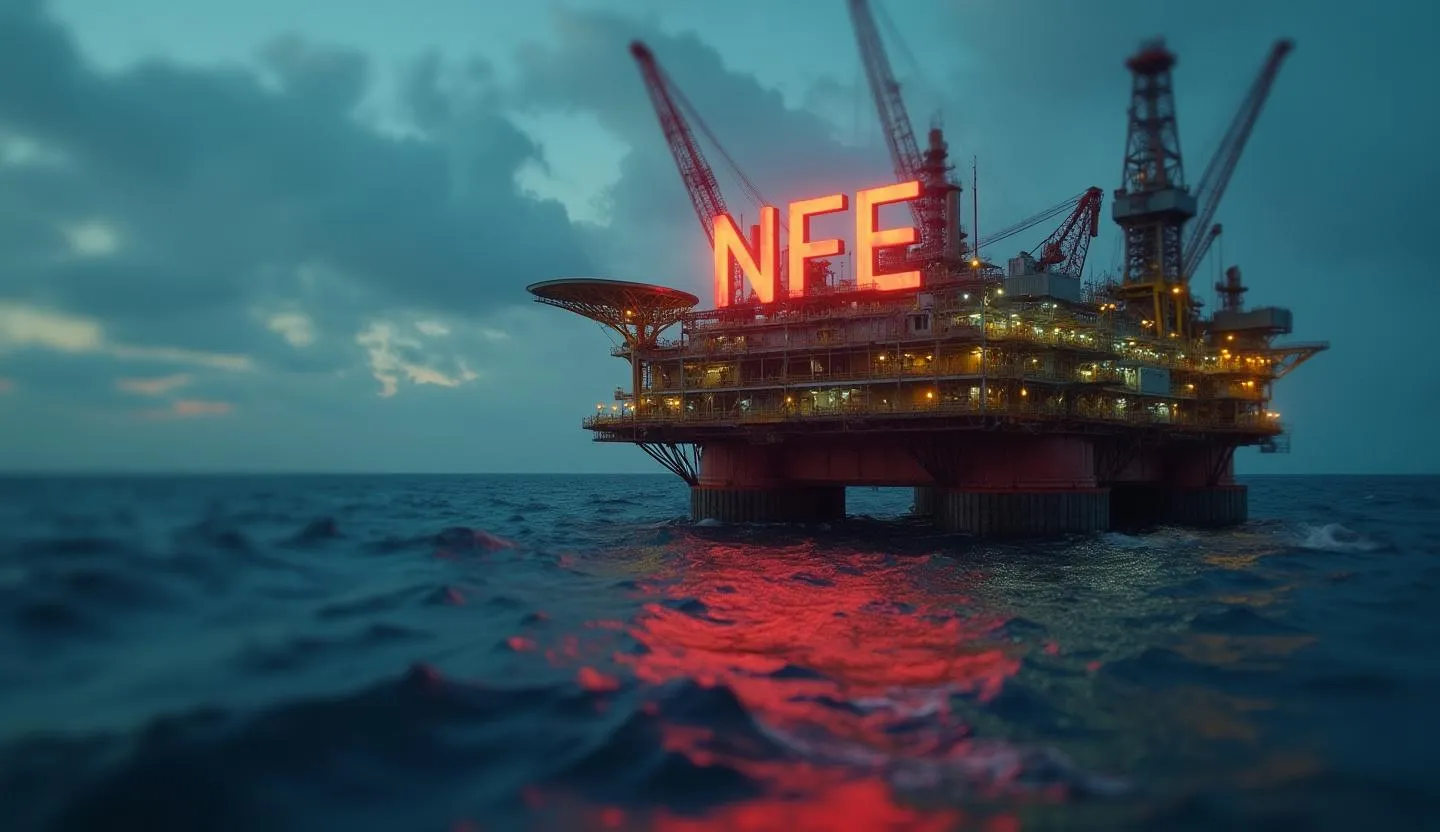Mounting Uncertainty and a Sobering Price Target Redefine NFE’s Trajectory
New Fortress Energy (NFE), a global energy infrastructure company specializing in natural gas liquefaction and power solutions, has found itself at the epicenter of market turbulence. On August 13, Johnson Rice, a well-respected energy-focused research firm, issued a notable downgrade—moving NFE from a ‘Buy’ to a ‘Hold’ and slashing its price target to $4. This new target, while above current levels, signals a dramatic reassessment of risk and reward for investors, especially given NFE’s recent financial, operational, and reputational challenges.
Analyst upgrades and downgrades often act as catalysts—or caution signs—for investors. In the case of NFE, the downgrade comes just as the company confronts a barrage of bad news, a prolonged share price collapse, and growing uncertainty about its financial disclosures. For investors, understanding the reasoning behind such a downgrade—and the context in which it arrives—is crucial for portfolio risk management and alpha generation.
Key Takeaways
Potential Upside of 65.7%: Johnson Rice’s revised $4 price target is 65.7% above NFE’s current price of $2.415, but this must be weighed against severe operational and financial headwinds.
Stock in Freefall: NFE shares have plummeted nearly 85% from their yearly high, with multiple 8-9% single-day sell-offs in August alone.
SEC Extension & Debt Talks: The company has delayed its quarterly report due to ongoing negotiations over debt covenants, raising red flags about its financial health (Reuters).
Bearish Technicals: NFE’s recent RSI of 24.6 and price well below its 20-day EMA/SMA indicate the stock is deeply oversold, but there’s little sign of stabilization.
Downgrade from a Sector Specialist: Johnson Rice’s energy sector focus and respected voice in small/mid-cap energy add significant weight to the downgrade.
Johnson Rice’s Downgrade: Not Just a Signal, but a Warning
A Specialist’s Perspective
Johnson Rice, a boutique investment bank with deep roots in the energy sector, doesn’t issue ratings changes lightly. Its research is highly regarded among institutional energy investors, and its client base includes many of the sector’s largest asset allocators. The firm’s decision to cut NFE to ‘Hold’ reflects not just valuation concerns, but a fundamental reassessment of near-term business risks.
Analyst Confidence and Background:
“Johnson Rice’s energy sector focus and longstanding reputation make this downgrade particularly impactful.” Deepstreet
The firm’s revised $4 price target—down from a prior, unspecified level—suggests that even in an upside scenario, the path forward is fraught with risk. The downgrade also stands out because it comes amid heightened volatility, not after a period of stabilization.
The Anatomy of a Steep Decline: NFE’s Stock and Financial Performance
A Year of Selling Pressure
Peak to Trough: NFE’s share price has cratered from a 52-week high of $16.66 (January) to a current price of $2.415—a staggering 85% decline.
Recent Rout: August alone has seen the stock drop over 20%, including back-to-back 8-9% one-day losses following negative news events.
Technical Red Flags: The stock’s 20-day EMA ($3.10) and SMA ($3.38) are both well above current levels, while the recent RSI (24.6) signals deeply oversold conditions. These technicals hint at panic selling but offer no clear bottom.
Volume Spike: Daily volume has surged to levels not seen since May’s selloff, indicating capitulation rather than accumulation.
Financial Uncertainty Mounts
While detailed quarterly financials are not available due to NFE’s SEC filing delay, several data points paint a concerning picture:
Ongoing Debt Negotiations: The company’s request for more time to file its Q2 report—citing active talks over additional credit support—suggests real risk to its debt covenants and access to capital markets (Reuters).
Market Sentiment: Of 247 trading sessions in the past year, only 120 were up days, with a negative daily change trend and a sentiment ratio under 0.5—a sign that bears have controlled the narrative for months.
Liquidity Watch: With an average daily trading volume of 7.7 million shares, recent spikes to over 26 million shares traded suggest forced selling and institutional exits.
The Downgrade in Context: Is $4 Even Achievable?
Calculating the Potential Upside—And Its Caveats
At a current price of $2.415, Johnson Rice’s $4 price target offers a theoretical 65.7% upside. This would normally be eye-catching for deep value or contrarian investors. However, context is everything:
The Upside is Relative: Achieving $4 from here assumes the company can resolve its debt issues, restore investor confidence, and stabilize its business model—all of which remain highly uncertain.
A “Hold” Rating, Not a “Buy”: The analyst’s shift from Buy to Hold, even with a much higher target, signals that the risk/reward is now balanced by the likelihood of further downside.
What Could Change the Trajectory?
Resolution of Debt Issues: If NFE can renegotiate its debt covenants or secure new credit facilities, the stock could stage a technical rebound.
Restoration of Financial Transparency: A timely and clean SEC filing would address one of the market’s biggest worries.
Sector Tailwinds: Any positive developments in LNG pricing or regulatory clarity could provide a much-needed tailwind, though this seems unlikely in the near term given NFE’s company-specific issues.
Recent News: Fueling the Selloff
The past month has brought a cascade of negative headlines:
August 12:
"Why New Fortress Energy Stock Is Plummeting Again Today": Shares fell another 8.6% amid growing investor fear (Motley Fool).
SEC Filing Delay: NFE disclosed it would seek an SEC extension to file its Q2 report, citing ongoing debt negotiations (Reuters).
August 6:
"Why New Fortress Energy Stock Is Plummeting Today": Another 9.2% drop linked to continued uncertainty and lack of transparency (Motley Fool).
“The company’s share price was down 8.6% at 11:15 a.m. on August 12, as investors digested the latest round of negative headlines.” —The Motley Fool
Expert Opinions: What the Market is Saying
While few analysts have stepped forward to defend NFE, the tone of market commentary has turned decisively bearish:
“The request for more time to file its quarterly report raises significant concerns about New Fortress Energy’s liquidity and debt management.” —Reuters, August 12
“Investors are fleeing as uncertainty builds around NFE’s financial disclosures and the stability of its capital structure.” —Motley Fool, August 12
Navigating the Risks: What Investors Should Watch
Near-Term Catalysts (or Traps)
Resolution (or Breakdown) of Debt Talks: The outcome could make or break the company’s trajectory over the coming weeks.
Regulatory and Legal Risks: Delays in SEC filings often precede further regulatory scrutiny—investors should be alert for additional disclosures or enforcement actions.
Short Interest and Technicals: With bearish sentiment at extremes, the potential for a short-covering rally exists—but only if there is a credible positive catalyst.
Longer-Term Considerations
Business Model Viability: NFE’s focus on LNG infrastructure and power generation is capital-intensive and highly sensitive to credit market conditions. Any sustained impairment to its balance sheet could threaten its core operations.
Sector Context: While the global LNG market has shown resilience, company-specific risks now dominate the narrative for NFE.
Conclusion: A Downgrade That Demands Attention
Johnson Rice’s downgrade of New Fortress Energy from Buy to Hold, paired with a $4 price target, is both a warning and an opportunity for investors who thrive in high-risk, high-reward situations. The stock’s deep value discount is offset by severe operational and financial risks, with the path to recovery dependent on rapid resolution of its debt and disclosure issues.
For investors, the key is to watch for concrete actions—debt agreements, SEC filings, and credible management updates—before considering any contrarian play. Until then, the risks clearly outweigh the rewards, and even the revised price target should be viewed as aspirational, not inevitable.

.svg)
.svg)
.svg)
.svg)

.svg)

.svg)
















